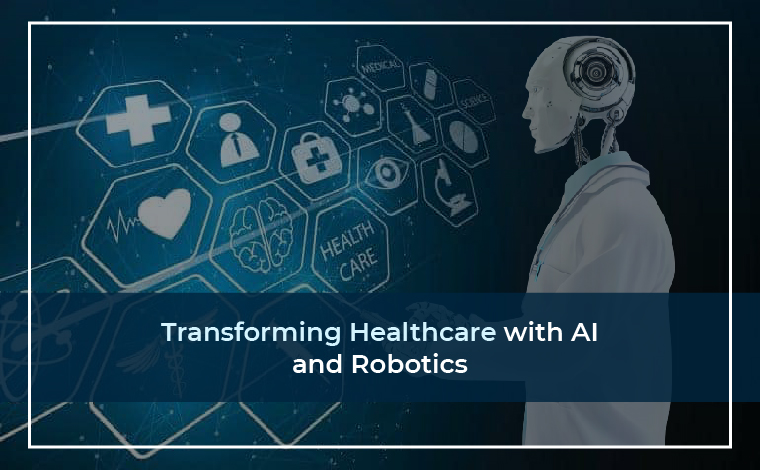


Today’s cutting-edge technologies—Robotics and Artificial Intelligence—are revolutionizing how we conduct business, particularly by streamlining processes. Their application promises groundbreaking innovations across various industries, with the healthcare sector being a prime example.
AI and digital assistants are reshaping healthcare systems in remarkable ways. But how exactly does this transformation happen? Nowadays, AI assists clinicians in meeting patient demands and addressing public health needs efficiently.
Recent advancements have led to significant improvements in the life sciences sector’s operational dynamics. The innovations emerging from AI have not only simplified tasks within hospital environments but have also played a crucial role in alleviating the clinical workload and reducing burnout among healthcare professionals.
The COVID-19 pandemic has further turbocharged the digitization process, accelerating the adoption of artificial intelligence within healthcare. Whether it’s discovering new medications or facilitating virtual doctor-patient interactions, AI has woven itself into the fabric of hospital management. These emerging technologies are becoming increasingly adept at performing human tasks more efficiently and with fewer errors.
From genetic testing to robotic-assisted surgeries, AI is simplifying the lives of hospital administrators, physicians, and the public alike. Moreover, conversational robots and other digital aides are revitalizing modern healthcare environments, capable of learning and acting with a human-like touch.
### Integrating Robotics and AI in Healthcare
To fully harness the potential of modern technologies in healthcare, AI and Robotics require continuous exploration and experimentation, paving the way for innovation in numerous applications.
The distinction between AI and Robotics is becoming less clear, as robots are increasingly integrated with artificial intelligence. While a basic robot can handle heavy-duty tasks, adding an AI algorithm allows it to identify what items it carries and where they are located.
In this tech landscape, AI serves as the brain while Robotics operates as the body. By merging the two, we can create robots capable of thinking and problem-solving much like humans.
That said, robots currently lack what is often referred to as a “sixth sense,” which is essential for effective coordination. Yet, developers are making strides toward enabling robots to gain this vital capability.
There are already many examples demonstrating the implementation of AI and Robotics in healthcare, including:
– **Patient assessment prioritization** during emergencies.
– **Automation of health tracking** to improve efficiency.
– **Continuous supply of medication and equipment**.
– **Facial recognition interactions with patients**.
– **Personalized health programs** delivered via robotic systems.
Indeed, automation and digitization are permeating the clinical care landscape. With promising performance, feasibility, and innovation, AI and Robotics have the potential to transform the healthcare industry in countless remarkable ways.
### How AI and Robotics Are Transforming Healthcare
Healthcare organizations are increasingly using AI algorithms to enhance decision-making with minimal human input. It is anticipated that these technologies will eventually reach a point where they can make decisions autonomously.
With tech companies playing a significant role in this evolution, the integration of AI and Robotics promises to bring about revolutionary changes to the health sector.
1. **In Patient Care**: AI can assist in identifying chronically and critically ill patients, helping healthcare professionals adopt more comprehensive treatment approaches through robotic surgeries and interactive robots.
2. **Unmatched Precision**: Robotic systems excel in conducting complex procedures efficiently and accurately. With appropriate programming, the risk of failure is virtually eliminated. Micro-robots can facilitate microsurgeries with minimal human interaction.
3. **Autopsy Procedures**: Robots can also perform autopsies, guided remotely.
4. **Minimizing Hospital Visits**: The rise of digital assistants has reduced the necessity for in-person hospital visits for many clinical care needs. AI-enabled robots are now involved in consultations, telemedicine, and even emergency care settings.
5. **Clinical Decision-Making**: Predictive analytics enhance clinical decision-making and streamline administrative responsibilities. By recognizing patterns in patient reactions, AI can significantly influence healthcare decision-making processes.
Experts agree that AI and Robotics represent the future of healthcare. With ongoing innovation and development, many pharmaceutical companies recognize and are adopting AI for enhanced efficiency and accuracy.
Simbo offers an AI-driven platform that enables more flexible and accurate clinical care, featuring virtual assistants that emulate human capabilities and meet various demands.
### Final Thoughts
By leveraging AI-powered digital assistance, hospitals can focus more intently on patient care with improved accuracy and precision. This approach addresses the needs of both the public and healthcare professionals, much like what Simbo strives to achieve!